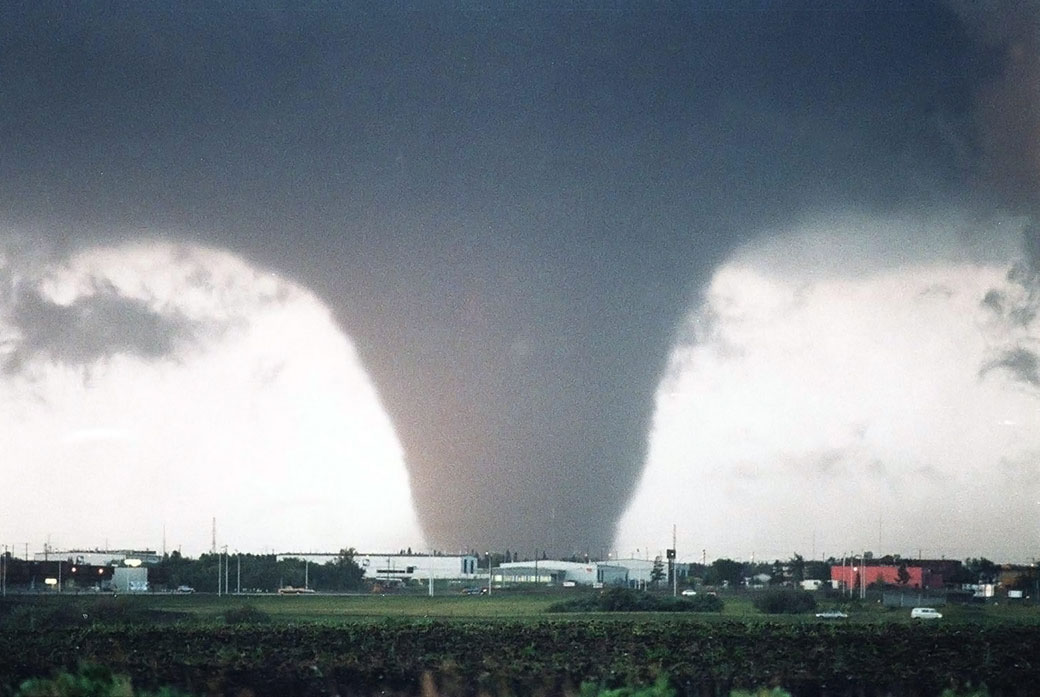TORONTO – Severe summer weather is heading to a town near you. But how will you know?

On March 31, the federal government rolled out the Alert Ready program in partnership with The Weather Network. It requires that all radio and television broadcasters issue public safety messages as they are issued by federal, provincial and municipal levels. Participation is mandatory. This warning system isn’t just relegated to weather: it includes fire, biological, hazardous materials, environmental and even terror alerts.
When it comes to the weather, Environment Canada is already issuing warnings on its website. Most people turn to new sources as a means of getting weather alerts, but the agency does provide a more immediate source: the Weatheradio.
READ MORE: Environment Canada urges Canadians to own Weatheradio for severe weather
This small, inexpensive handheld device (there are also larger ones available) receives signals from a network of radio transmitters that span the United States and Canada. It operates 24-hours a day, typically with local weather forecasts (in both languages). However, as soon as Environment Canada issues a warning, it issues the alert — immediately. Of course, the radio has to be setup properly, though it is fairly easy to do. In 2011, the government issued these devices to schools all across Canada.
But provinces have taken things into their own hands.
In Saskatchewan, for example — a province that sees a lot of tornado activity — a new warning system was rolled out on Friday. SaskAlert will issue warnings about severe weather, fires, evacuations and more.
READ MORE: Saskatchewan-wide alert system launches
“SaskAlert can provide critical information about emergency situations as they are developing so residents of the affected area will be able to take action to protect themselves, their families and property,” said Jim Reiter, a government relations minister.

But the city of Saskatoon also has its own, called NotifyNow which sends out alerts to residents of the city via SMS text message, a voice call to a landline or cellphone or by email.
In Ontario residents can also sign up to receive alerts via email or SMS texts on their cellphones. Alberta has developed an app for its emergency alert system.
There are also some towns that have siren systems like those found in the United States. However, the responsibility lies in the hands of the municipality.
Is Canada behind the times?
The United States — which undoubtedly sees much more tornado and severe storm activity than Canada does — has adopted the Wireless Emergency Alert system. Rather than sending out alerts to television and radio stations, it utilizes a push notification system on your cellphone. Anyone within range of a receiver that has issued a warning receives the alert.
Of course, it can be disabled by the user, but it represents a way of utilizing more modern technology along with a more modern form of communication tool.
Speaking about why they chose to move to push notifications, Greg Carbin, a meteorologist at the Storm Prediction Center said, “There’s a very limited number of people that go out, buy a special radio for this purpose and then set it up so they can be alerted.”
READ MORE: Should Ontario invest in tornado sirens?
Carbin said that already the push notification system saved lives. On November 17, 2013, parishioners were in church when several phones went off alerting them to a tornado warning. Fortunately, they sought shelter before the tornado struck the church.
WATCH: Family prays as tornado passes by their home after Nov. 17, 2013 tornado passes
But even push notifications has its challenges.
“The system has proven its worth in terms of getting the word to folks who might not otherwise be able to be warned,” Carbin said. “But the big question is, can you manage the warnings in such a way that you don’t have a lot of people turning this thing off on their phones?”
Though Environment Canada doesn’t have a similar system in place, it is working on an experimental product called ECAlertMe, where residents can sign up for alerts in particular areas. So far it’s been met with some success.
Though the new AlertReady system is being rolled out, it’s akin to what the U.S. had in place 20 years ago with its Emergency Alert System.
What you can do
Though there are many ways people can be alerted, ultimately, it’s about being prepared on your own end.
It’s important to keep an eye on the weather at the start of the day. Pay attention to forecasts calling for severe weather and always be aware of your surroundings.
A Weatheradio is handy, particularly for boaters or cottagers. You could try various cellphone applications (though their reliability may be questionable) and monitor Environment Canada’s website for any weather warnings.
A spokesperson from Environment Canada was not available to speak to Global News by publication deadline.




Comments